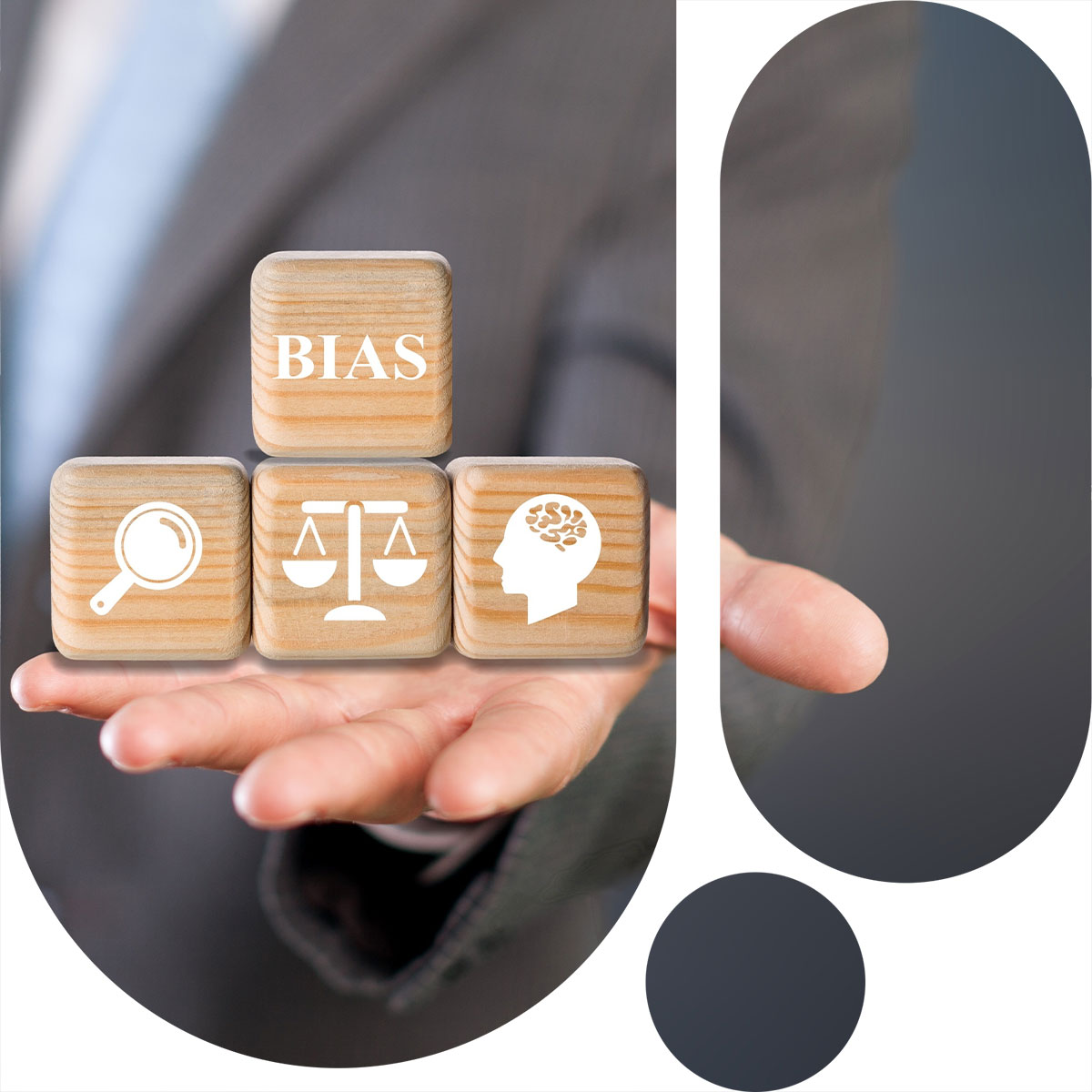Here are some ways employers can build or improve upon their diversity, equity, and inclusion programs.
While many companies have been putting diversity, equity, and inclusion into greater focus over the last few years, there is still significant room for improvement. Diverse teams foster better employee engagement and productivity and they allow for better problem-solving abilities as varying perspectives often approach business challenges in a new way.

Be aware of unconscious bias
Understanding bias and building awareness is a first step towards real change. There are a couple of different forms of bias. The first is unconscious bias, which can include associations or feelings of bias that may be hidden underneath the surface. Unconscious biases do not necessarily align with our conscious beliefs or declared beliefs, which means unconscious biases are even more important to pay attention to.
Leaders can start addressing this by helping employees understand how individuals are impacted by unconscious bias, and what actions continue to reinforce biases. One way to build awareness and address unconscious bias is to encourage every employee to review, question, and analyze their own personal biases and assumptions.

Communicate the importance of managing bias
Cultural humility is another way leaders and employees can manage bias and foster more inclusive environments. This concept involves remaining curious and humble about cultural differences. An understanding that no one is an expert, but is on a continuous learning journey when it comes to respecting and embracing other people’s experiences and realities, is of upmost importance.
One way organizations can help employees manage their own bias is by leveraging technology and training that provides guidance on actions for moving forward.

Promote pay equity
Managers must level out the playing field and provide fair opportunity for each employee. Organizations can leverage analytics to identify which employees are underpaid for similar roles or responsibilities. For example, people analytics can help managers pinpoint any pay gaps that may exist within their team, and leaders can assess patterns within various departments to get to the root of underlying issues.

Develop a strategic training program
Diversity training helps employees understand how cultural differences can impact how people work and interact at work. It can cover anything from concepts of time and communication styles to self-identity and dealing with conflict. Diversity training that is offered as optional tends to be more effective than that which is made mandatory.
Companies should also focus on training that’s relevant to their specific organization and employees, and that aligns with their broader diversity, equity, and inclusion initiatives and identified challenges. In addition to using internal resources, partnering with a consultant can help leaders build customized training programs for both the organization as a whole, as well as those that are function-specific.
It’s critical that leaders are clearly communicating why training is taking place, problems you’re trying to solve, and what comes next. This will help keep people motivated and also help them understand how the learnings tie back to broader company goals.

Acknowledge holidays of all cultures
One way to build awareness of diversity and foster greater inclusivity is to be aware of and acknowledge a variety of upcoming religious and cultural holidays. When closing out a team call or meeting, if the audience isn’t too large, ask how people what their plans are to celebrate the holiday. Use your company’s intranet to help employees become aware of and keep track of multicultural religious or holiday celebrations. Be respectful of these days when scheduling meetings, and understand that employees have different needs that may require flexibility.

Make it easy for your people to participate in employee resource groups
Employee Research Groups can help build connection and belonging. Building on this, in addition to leveraging ERGs, employers can make it easy for all employees to participate, whether it be creating a differing pay code for easy time tracking for ERG meetings, or asking employees to share initiatives or projects the ERG is focused on. Provide a toolkit or guidelines that employees can follow to encourage them to set up a new ERG.
Getting senior leaders on board is also critical. An executive and/or leadership sponsor can not only help to increase visibility, innovation, and awareness, but can also help align ERG activities with business goals. Additionally, commitments from senior leaders signal a wider, organizational commitment to improving diversity, equity, and inclusion practices.

Mix up your teams
A diverse cross-section of talent allows enhanced perspective, which will spur creativity on teams. If your team is homogeneous, invite someone who is a different gender, cultural background, or age, to weigh in on an initiative or project.
Much has been written about how diversity in teams positively impacts creativity and innovation, and the case for an inclusive culture is only growing stronger. There’s value in experiences with multiple perspectives, which inspires novel thinking, connecting thoughts in new ways, and different approaches to problem-solving.

Facilitate ongoing feedback
Organizations can encourage their people to share their feedback to get a better understanding of what’s going on under the surface. Deploying pulse surveys across the workforce will arm leaders with the information needed to make smarter decisions and reduce or eliminate any patterns of discrimination or biases within a particular branch or area of the organization, for example. Anonymous feedback via an employee pulse survey can help build a case to take immediate action on smaller, more pressing issues as well as inform long-term strategies. HR leaders and managers can encourage employees to use engagement and check-in tools to facilitate conversations and transparently communicate about how they’re feeling.

Assess company policies
Employers will also need to assess areas of the business in which discrimination can exist. Company policies and interpersonal interactions – such as the way an internal issue is handled – plays a key role in perpetuating existing problems. If employers start to rethink their policies, they can address and replace negative processes or interactions with more positive ones. Leaders first need to determine whether policies enable or perpetuate discrimination in the workplace such as racism or sexism and reshape them to move towards a more equitable workplace.

Track progress over extended periods of time
Diversity, equity, and inclusion efforts aren’t successful overnight. In fact, making structural changes to workforce strategies and systems can take many months, especially as businesses face new challenges around hiring and managing their people. A cultural shift takes time, which means organizations must set benchmarks and track their progress to assess how their efforts are moving the needle. This will not only show leaders what strategies are working, and which ones are falling short, but it will also help to hold them accountable in reaching their long-term goals.
Taking bolder action with
diversity, equity, and inclusion efforts
While diversity, equity, and inclusion are at risk during a crisis or downturn, it’s important for companies to recognize the key role they play in recovery, resilience, and overall success in the future. Effective DEI strategies will help better support employees, build culture, and create a thriving business. Employees will feel more engaged as they show up to work every day – whether in person or online – feeling safe, connected, and heard.
Diverse, equitable, and inclusive work environments also appeal to candidates as they remain highly engaged in conversations about breaking down systemic discrimination and bias and are more likely to apply to companies that are outspoken about diversity. Organizations must assess how they stack up when it comes to their DEI programs and identify areas that need to be put into even greater focus. Most importantly, companies must recognize that diversity, equity, and inclusion is not an option or a “nice-to-have” – it’s a necessity.
